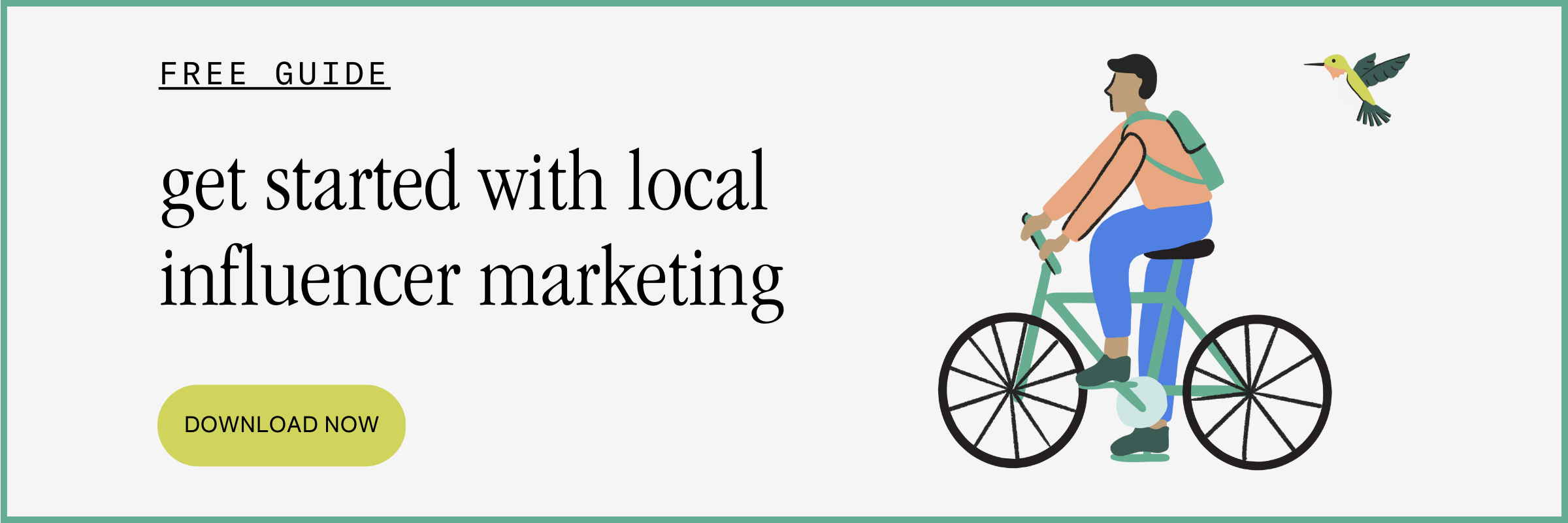Where do influencers fit in the marketing funnel?
Influencer marketing is no longer a new, trendy marketing tactic. Every brand should incorporate influencer marketing into their overall marketing strategy. If you’re not using influencers, you’re missing out on a massive opportunity for your brand to grow and flourish.
There's still confusion and ambiguity around where it fits in overall marketing plans. For example, where does influencer marketing fit in the marketing funnel? The simple answer: influencer marketing can fit in every stage.
What is a marketing funnel?
A marketing funnel is a customer’s journey from learning about a brand through becoming a loyal brand advocate. According to Sprout Social, there are 5 stages: Awareness, consideration, conversion, loyalty, and advocacy.
The top of the funnel is the largest because it's capturing a wide audience. As the funnel gets smaller, it illustrates the amount of people that are still in the flow and could become paying customers.
This article examines the first four stages of the influencer marketing funnel: Awareness, consideration, conversion, and loyalty.
How is the marketing flywheel different than the funnel?
The marketing funnel and flywheel are both customer journey models that track customers from brand discovery through customer loyalty. Rather than funneling the customers down, the flywheel keeps circulating them around. The idea is that happy customers carry the momentum to attract and recruit new customers.
Influencers can impact every stage of the customer journey
Customer journeys can vary wildly based on the product, service, or even event. The journey for purchasing a pair of shoes could take 15 minutes, while the journey for booking a cruise could take months. Influencers can impact every stage of the funnel.
The amazing thing about activating influencer marketing is the speed in which followers will act on the recommendation. Some followers, who genuinely trust the influencer, will make a purchase same-day! This is especially true for local influencers who have a connection with most, if not all, of their followers.
1. Awareness or interest - attract
The first stage of the marketing funnel is awareness or interest. In this top of funnel (TOFU) stage, prospects learn about your product, service, or event. Your brand must catch their eye and speak to common pain points that your brand solves for. Hopefully one of these pain points resonated with them!
Mega or celebrity influencers have the largest potential reach. They're good at getting the word out to potential customers who have never heard of your brand. All types of influencers are great at this, though!
Sure, mega influencers reach more people, but smaller influencers, like local or nano, typically have a more engaged audience. Their followers will take the time to consume their content more completely.
2. Consideration or desire - inform middle funnel
Influencers are amazing at hyping up a brand, but they’re great at providing detailed information, too. They can discuss features, benefits, and unique selling points to their followers, and some will even give you an endorsement.
Now that influencers got your brand on the radar of new prospects, use their content for retargeting! (Make sure you have the rights to do this when negotiating contracts with influencers.) Try running ads on the channel where the influencer has been talking about your brand and related channels. For example, if they posted about your brand on Instagram, open up retargeting ads to Facebook, too.
3. Conversion or action - convert bottom of funnel
Conversion or action is the phase at the bottom of the funnel before customers become (hopefully!) loyal brand advocates. This phase can get complicated from a tracking and attribution perspective in general, but especially when working with influencers.
You’ll often see mega, macro and mid-tier influencers using tracking or affiliate links with discount codes. They’re an easy way to attribute sales to influencers, but they do have flaws. First, not everyone clicks on them or inputs the code. When this happens, an influencer could be driving significantly more traffic to a website than analytics show.
Additionally, tracking links make the content feel like an advertisement. When the content feels like an ad, consumers tend to lose trust in it. According to a study conducted in 2023, 62% of respondents did not purchase a product that an influencer promoted.
When prospects are near the bottom of the funnel, it's important to activate influencers they trust. Most of the time, that means local, nano, or even micro influencers that people perceive as genuine promoters.
4. Loyalty - engage
It’s fantastic to generate sales! But how can you get that person to return again and again? Even better, how can you get that person to return and bring their friends?
Local influencers are a lesser known but incredibly powerful type of influencer. They're everyday people who are active in your target market. Oftentimes they’re your current customers!
After making a purchase, reach out to customers. Thank and then ask them to share their experience on social media in exchange for a gift card or free item.
Similarly, you can activate new local influencers to try your product or service. Gift them the experience in exchange for a post about it on social media where they'll reach their network of local people.
Local influencers reach a group that’s:
Very interested because they trust the person’s recommendations.
Are current customers (and therefore create social proof by commenting on the post).
Have tried it long ago and now plan to become repeat customers because of the influencer’s post!
Which type of influencer should your brand work with?
After you decide that working with influencers aligns with your brand goals, determine which type to work with. This often comes down to four things: what your brand sells, where you brand sells it, your budget, and your goals.
It’s common for brands to assume that the bigger the influencer, the better. But that’s simply not true! While some macro and mega influencers are great brand partners, smaller influencers drive more meaningful results for brands.
We suggest testing a handful of local and nano influencers along with a few larger influencers to see what works best for your brand. You can also take this short quiz that will determine which type of influencer your brand should work with!
Remember, if you're targeting a geographical area or market, local influencers are the best at driving meaningful brand results. On the other hand, if you sell entirely online or nationwide, nano influencers are a great choice.
Tips: improve your marketing strategy with influencers
If you’re ready to add influencers to your marketing strategy, start on our social media influencer marketing page! Discover information about every influencer type and access free resources to enhance your marketing efforts.





